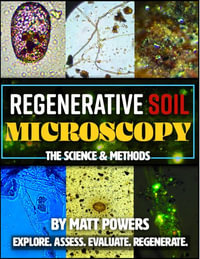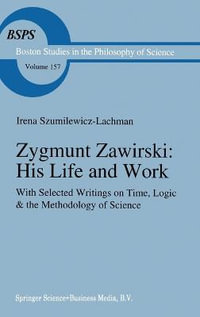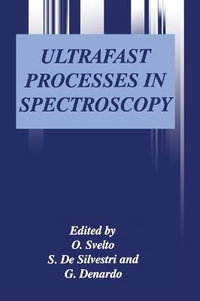| Preface | p. v |
| Foreword | p. vii |
| Acknowledgments | p. ix |
| Acronyms | p. xv |
| Anisotropy in Electron Energy Loss Spectrometry | p. 1 |
| Introduction | p. 1 |
| Interaction between a pair of electrons | p. 2 |
| Fermi's golden rule | p. 4 |
| The double differential scattering cross section | p. 6 |
| The dipole approximation | p. 7 |
| Scattering kinematics | p. 11 |
| Experimental considerations | p. 12 |
| Conclusion | p. 20 |
| The Principles of XMCD and Its Application to L-Edges in Transition Metals | p. 23 |
| Introduction | p. 23 |
| Experimental details | p. 23 |
| The absorption coefficient and its magnetic part | p. 26 |
| Origin of XMCD in a simple two-step model | p. 27 |
| General formulation via the sum rules | p. 33 |
| Magnetic X-ray microscopy | p. 36 |
| Summary | p. 40 |
| Chirality in Electron Energy Loss Spectrometry | p. 43 |
| Broken symmetries in EELS | p. 43 |
| The effective photon | p. 44 |
| Inelastic interference | p. 47 |
| The mixed dynamic form factor | p. 50 |
| Properties of the MDFF | |
| Equivalence to X-ray dichroism | p. 55 |
| Experimental setup | p. 57 |
| Chirality of transitions | p. 62 |
| Momentum-resolved ELNES and EMCD of L2,3 Edges from the Atomic Multiplet Theory | p. 65 |
| Core level spectroscopy of transition metal oxides and strongly correlated materials | p. 65 |
| Atomic multiplet theory for the calculation of X-ray absorptionspectra | p. 66 |
| Parameters for an atomic multiplet calculation | p. 69 |
| Momentum-resolved EELS and EMCD spectra from the atomicmultiplet theory | p. 69 |
| EELS and EMCD spectra at the L2,3 edge of IRON in magnetite | p. 72 |
| Conclusions | p. 72 |
| XMCD Spectra Based on Density Functional Theory | p. 79 |
| Introduction | p. 79 |
| Density functional theory | p. 79 |
| The linearized augmented plane wave method | p. 81 |
| XMCD | p. 82 |
| Results | p. 86 |
| Conclusions | p. 96 |
| Multiple-Scattering Theory and Interpretation of XMCD | p. 101 |
| Multiple-scattering theory of XMCD | p. 101 |
| Applications to XMCD | p. 103 |
| Examples: Rare earth metal6 | p. 106 |
| Conclusions | p. 112 |
| Linear Dichroism and the Magic Angle | p. 115 |
| Relativistic effects | p. 115 |
| The Magic Angle | p. 122 |
| Conclusion | p. 126 |
| Sum Rules in EMCD and XMCD | p. 129 |
| Operator expansion approach and XMCD sum rules | p. 130 |
| Error sources in XMCD sum rules | p. 131 |
| Simplified derivation of EMCD sum rules | p. 132 |
| Rotationally invariant form of the EMCD sum rules | p. 135 |
| Sum rules for real part of MDFFs | p. 141 |
| Dipole allowed sum rules for ELNES spectra-summary | p. 142 |
| Error sources in EMCD sum rules | p. 143 |
| EMCD Techniques | p. 149 |
| Basic geometry for EMCD | p. 150 |
| Tilt series | p. 154 |
| Detector shift | p. 155 |
| Objective aperture shift | p. 158 |
| Convergent beam methods | p. 159 |
| Chiral STEM | p. 163 |
| The q vs. E diagram | p. 164 |
| Chiral EFTEM | p. 165 |
| Considerations on the convergence and collection angles | p. 169 |
| Conclusions | p. 170 |
| Artefacts and Data Treatment in EMCD Spectra | p. 175 |
| Artefacts in the data cube | p. 176 |
| Data treatment | p. 185 |
| Conclusion | p. 195 |
| The Role of the Crystal in EMCD | p. 197 |
| The Bloch wave formalism | p. 197 |
| The density matrix formalism | p. 199 |
| Density matrices in the electron microscope | p. 200 |
| Simulating the inelastic diffraction pattern | p. 202 |
| Obtaining the EMCD signal | p. 206 |
| Simulation results | p. 207 |
| Recommendations for experiments | p. 209 |
| EMCD on the Nanometre Scale | p. 213 |
| Introduction | p. 213 |
| EMCD in the STEM | p. 214 |
| Serial STEM-EMCD | p. 217 |
| Parallel STEM-EMCD | p. 220 |
| Conclusion | p. 222 |
| Magnetic Dichroism in X-ray Holography | p. 225 |
| Overview | p. 225 |
| Holography with soft X-rays | p. 227 |
| Holographic imaging of magnetic domains | p. 232 |
| Recent developments and outlook | p. 237 |
| Prospects for Spin Mapping with Atomic Resolution | p. 243 |
| Mapping of single spins | p. 243 |
| Prospects for sub-lattice resolution in EMCD | p. 247 |
| Angular momentum in EELS | p. 250 |
| Index | p. 257 |
| Table of Contents provided by Ingram. All Rights Reserved. |
























